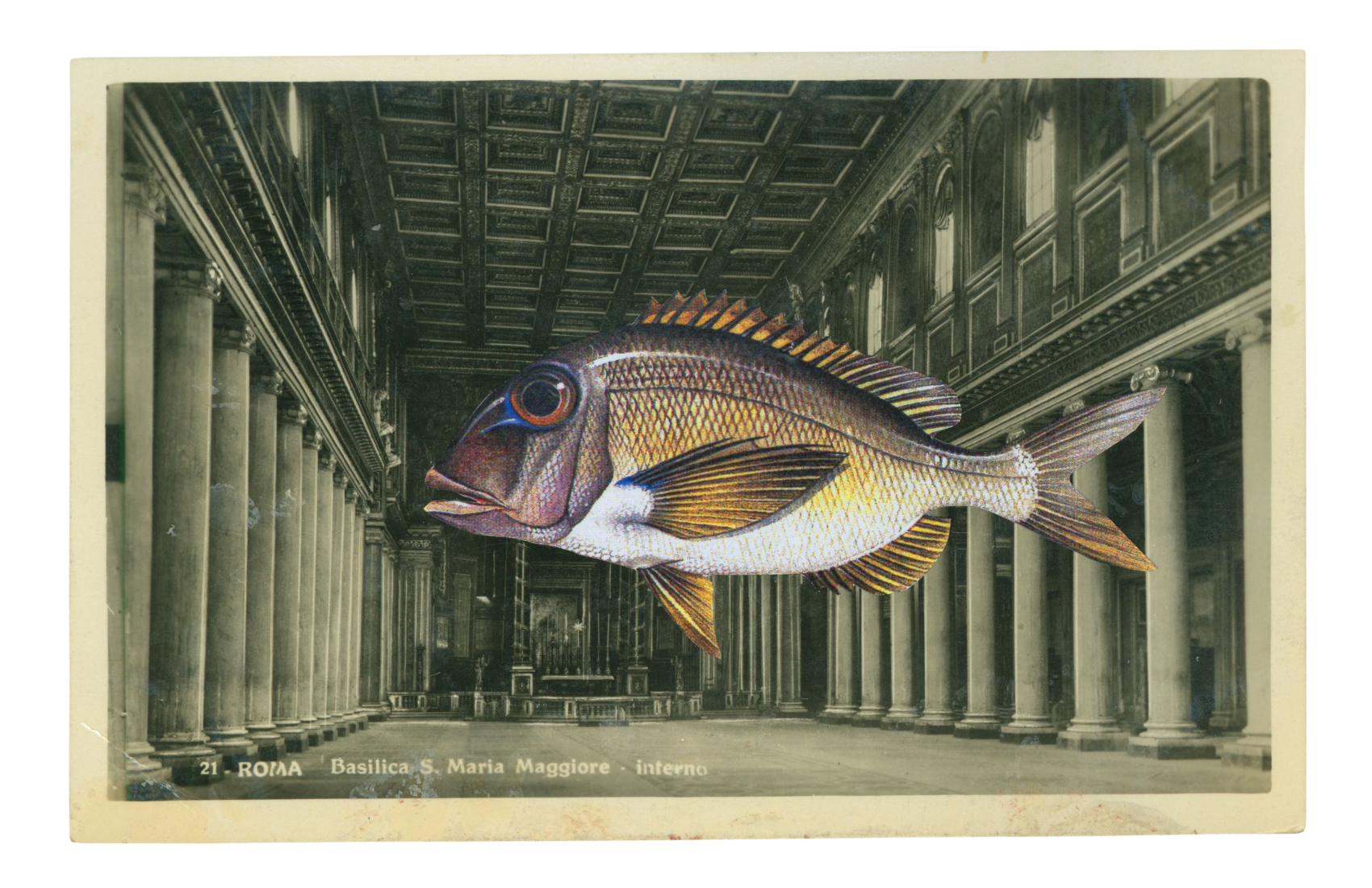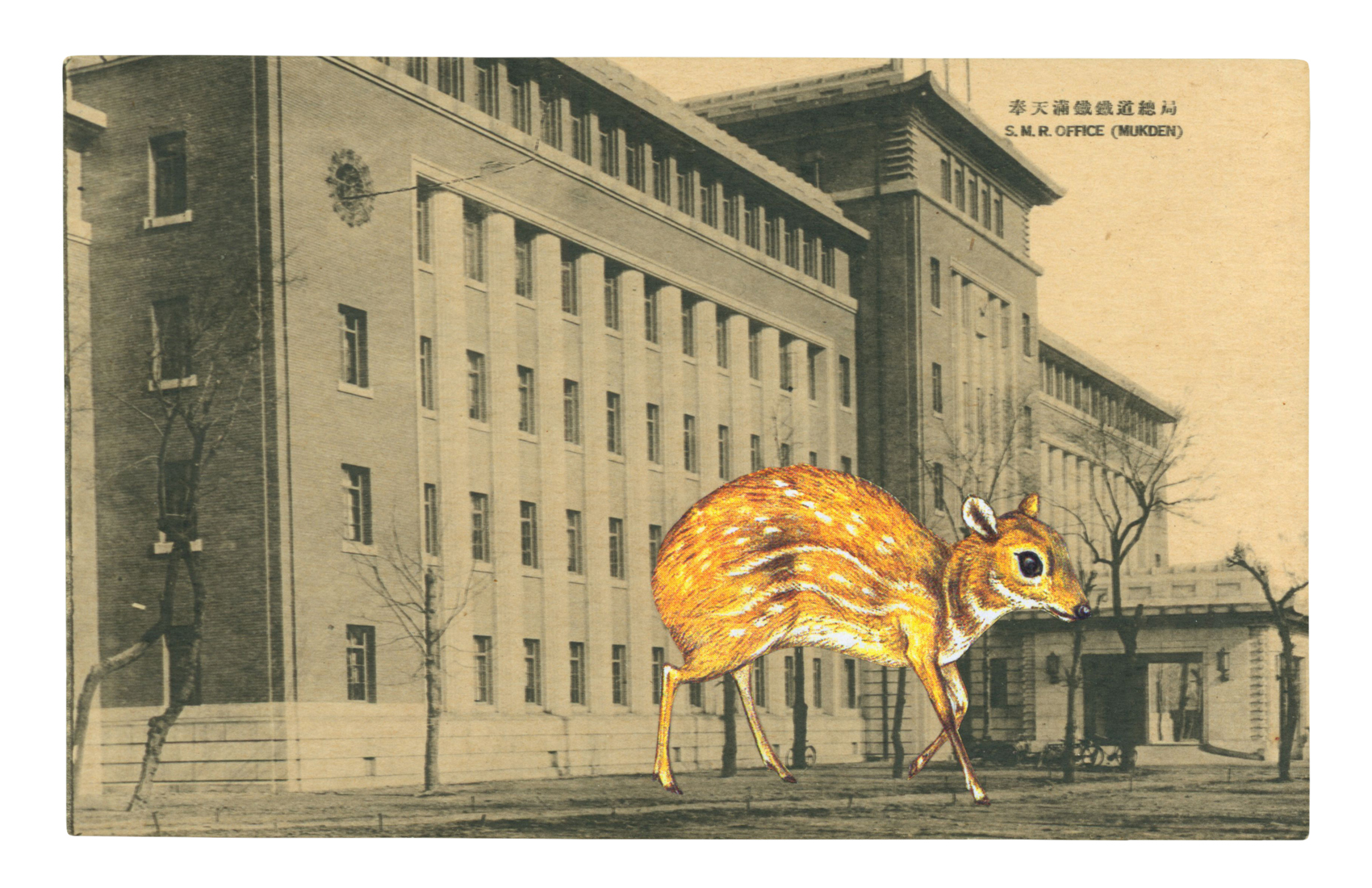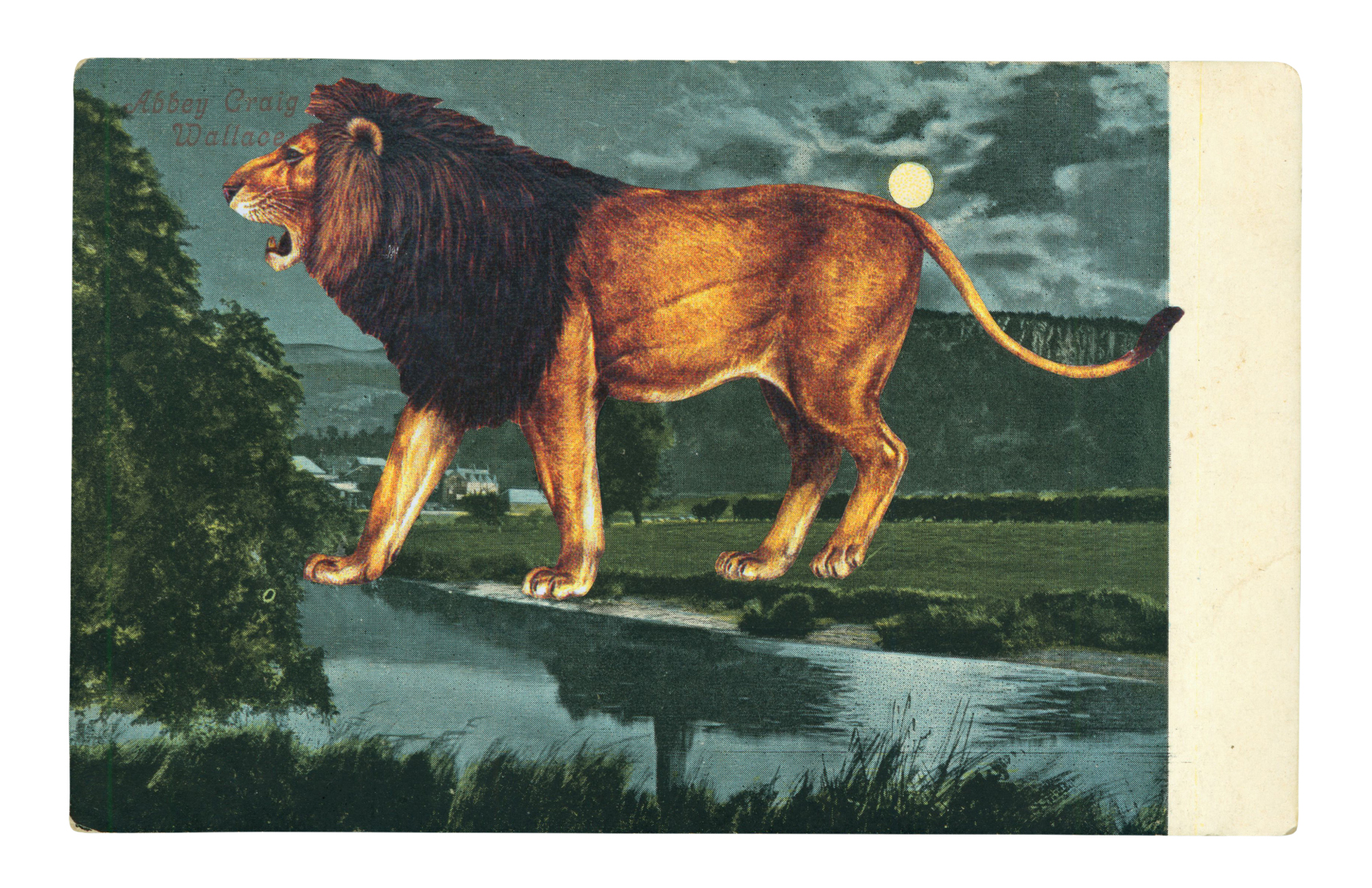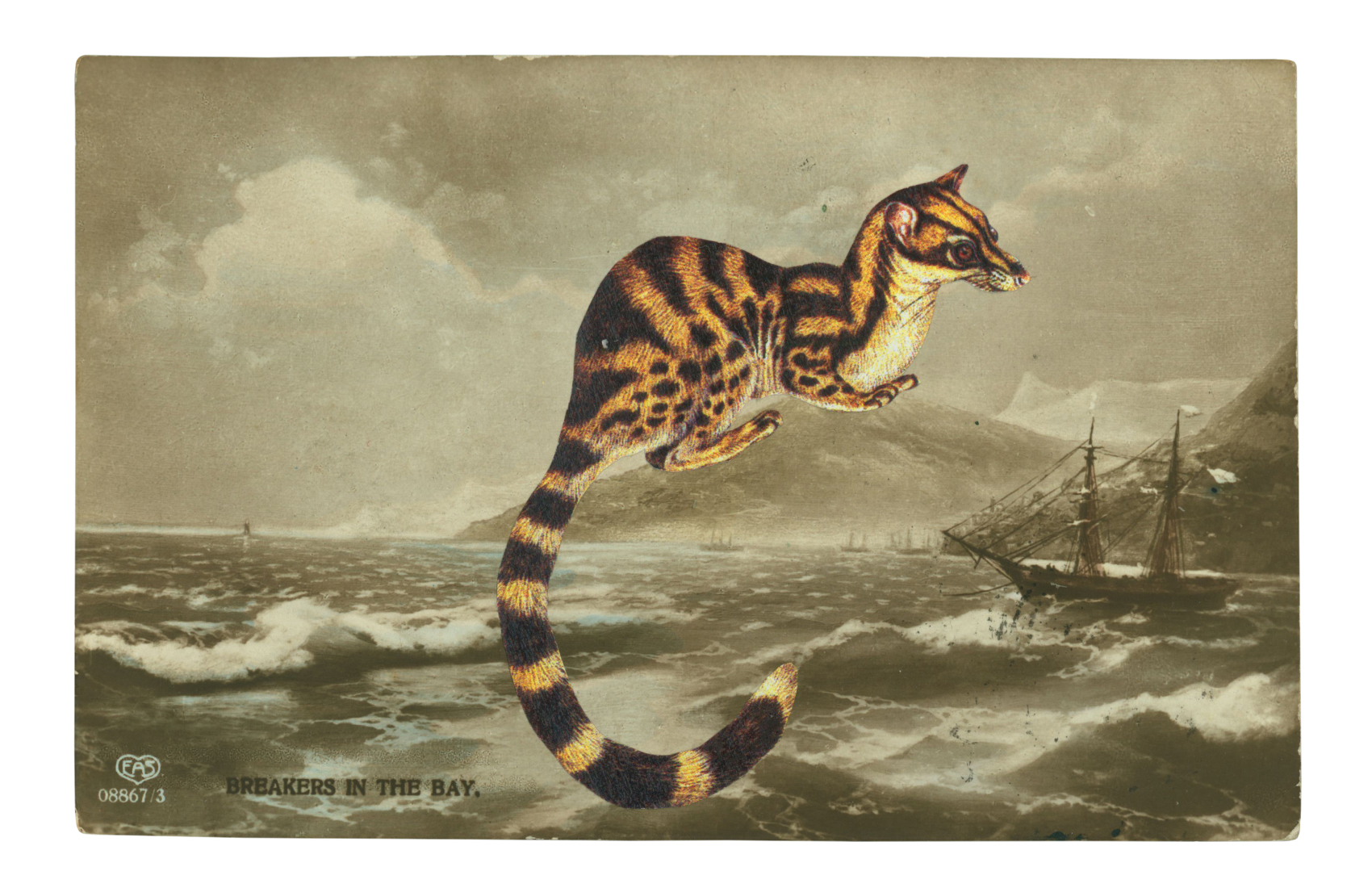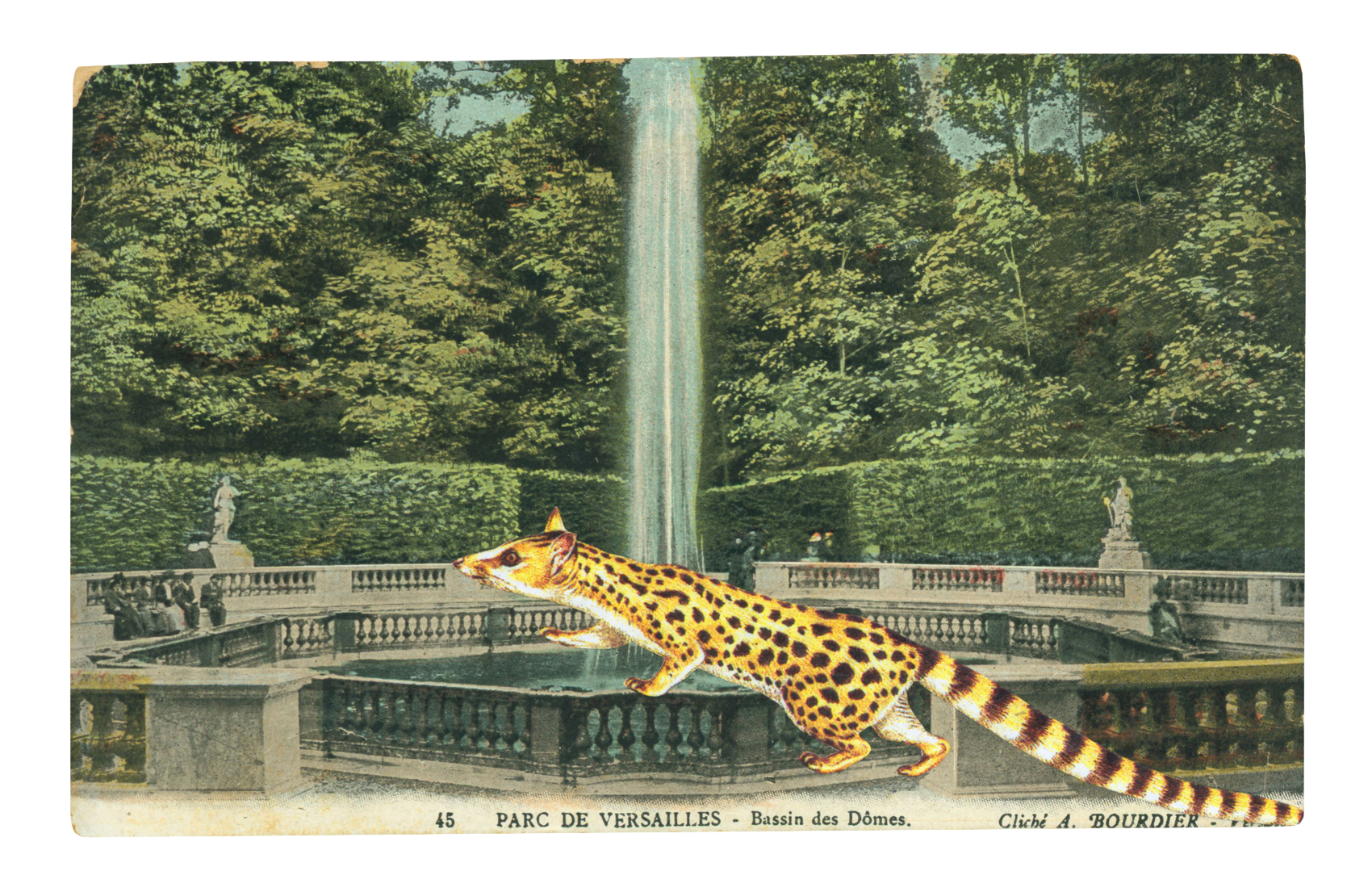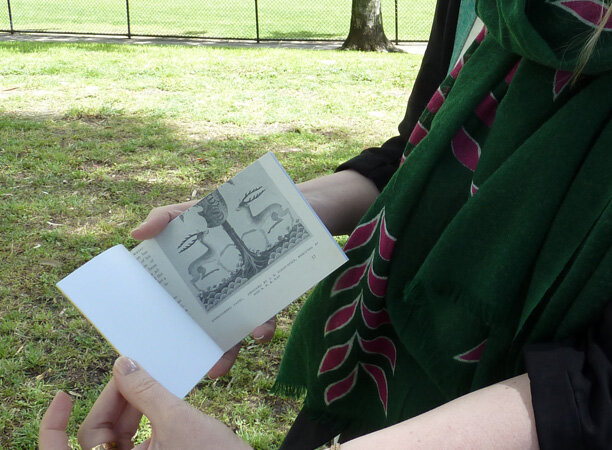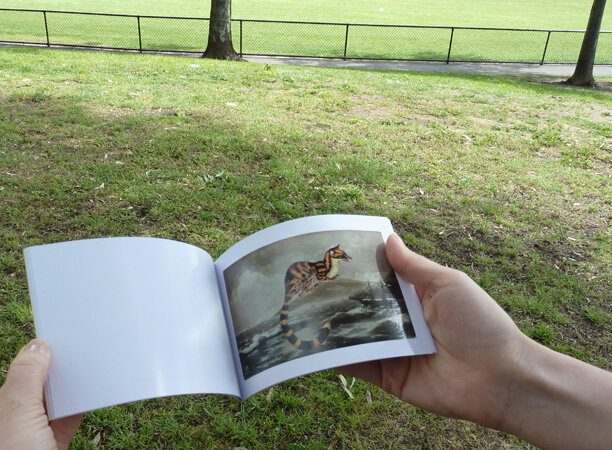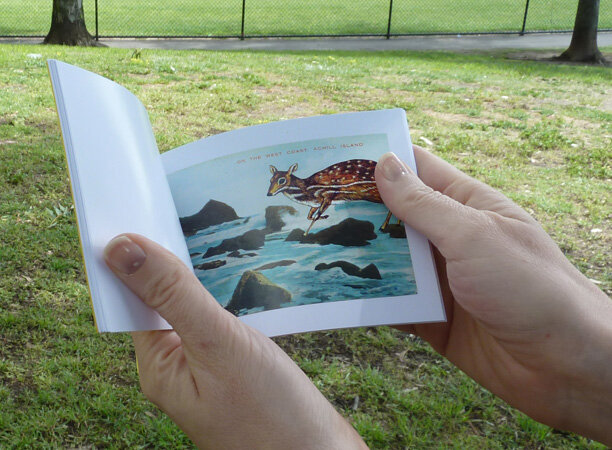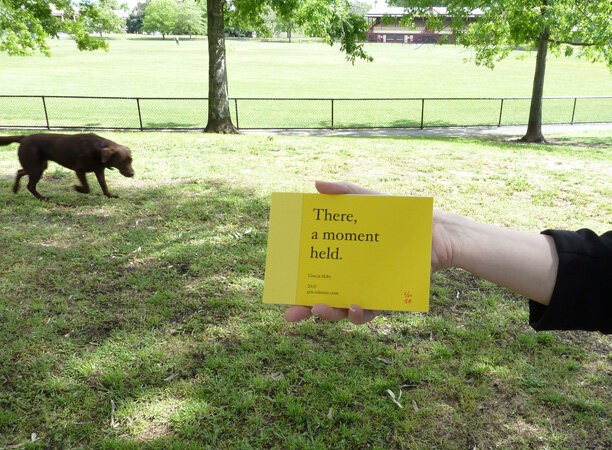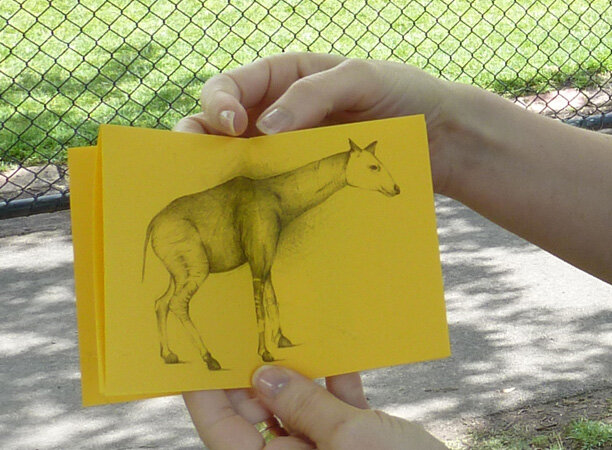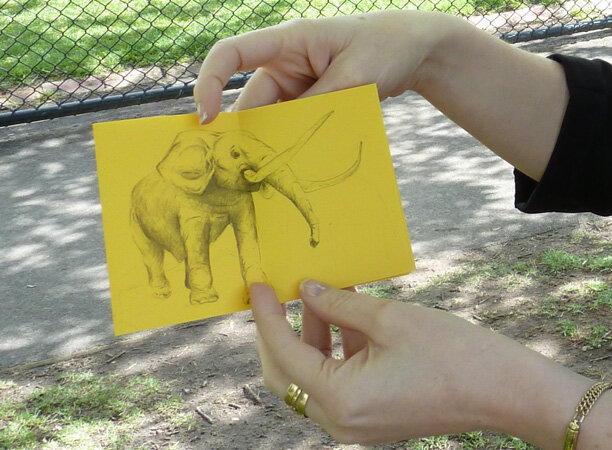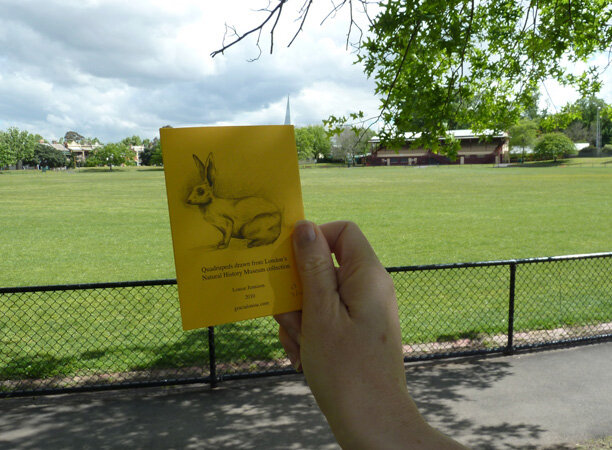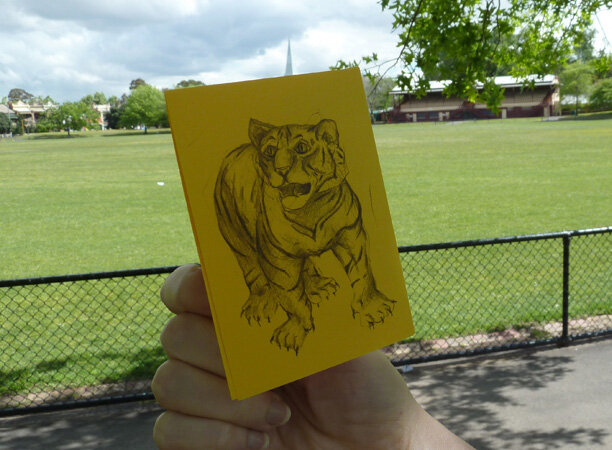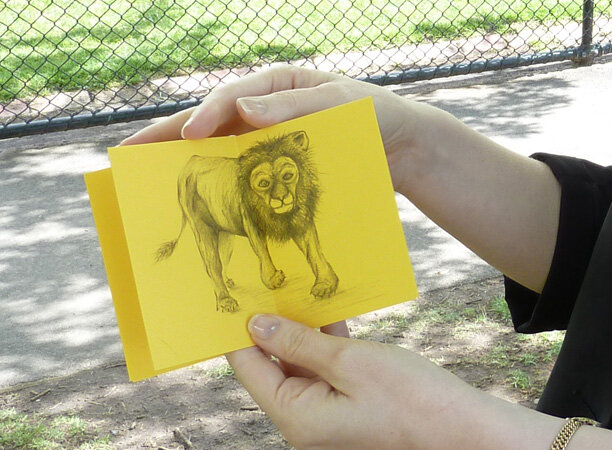A PAIR OF ZINES, SHELVED, 2010
1/ Gracia Haby
There, a moment held
November, 2010
Digital print zine
Edition of 60
A 10.5cm X 15cm, 27 page full-colour zine (with postcard collage titles printed in B&W on separate pages) with yellow cover card and spine, and a cardboard back.
This zine also features three random ephemera pages dispersed throughout.
This zine (and Quadrupeds drawn from London’s Natural History Museum collection) was made especially for Shelf Life (Delmar Gallery, 2010).
Collage on postcard, 2010
Titles of works as they appear:
Still without a clue
The entrance to le Musée Boucher de Perthes had one notable difference to all others, though some could not tell what this was, even after all these years
Keeping watch alternate days, there was little to no chance of intrusion (I)
Keeping watch alternate days, there was little to no chance of intrusion (II)
An aquarium such as this was easy to get used to (The name jolthead porgy less so)
The banded linsang with tail strong enough to cup the tallest of ships
Keeping on one’s toes for the reasons obvious
At least this one was safe
Making this near to impossible
With tail to catch moon should it fall
In plain sight of all those in office, the lesser malay chevrotan hoped luck was on her side
And so it would seem, not all the best hiding places were taken
2/ Louise Jennison
Quadrupeds drawn from London’s Natural History Museum Collection
November, 2010
Digital print zine
Edition of 100
A 21 X 30cm (folded to 7.5 X 10.5cm in proportion), B&W zine on yellow paper.
This zine features the African elephant named George who resided in the main hall of the Natural History Museum in the years prior to the Diplodocus; Johnston’s okapi on display in 1901; a tiger from the Game Animals of the Empire exhibition of 1932; a lion in a damaged cabinet after the 1944 bombings; a rabbit frequently sketched by schoolchildren in the Children’s Centre, 1949.
This zine (and There, a moment held) was made especially for Shelf Life (Delmar Gallery, 2010).
Mornington Peninsula Library interview: Louise Jennison
Melissa Hart
Mornington Peninsula Library blog
1st May, 2010
Our Library recently spoke to Louise Jennison, artist and bookbinder about bookbinding, the best things about journals and what she’s passionate about.
Your company, hammer & daisy produces a range of handmade goods such as journals, scribbler notepads, postcards, gift cards, zines, pencil cases, pin cushions, felt brooches and stuffed toys. What’s the best thing about making unique, handmade products?
By far the nicest thing about making handmade things from paper and at other times fabric is that each feels unique. Felt pins are made in small bursts, no more than 10 or so at a time, and notebooks can be sewn one afternoon, hot on the heels of a morning of zine production. Things are kept to small runs — the largest being the zines we make which are an edition size between 60 to 100 — and our interest remains piqued. Making these things that are varied, these things in small to smaller still editions keeps us both enjoying the process. This makes it possible to also release a batch of wraparound style bindings that use our prints (the off cuts, the detritus of artistic production) for their covers.
You are also an artist and have collaborated with Gracia Haby for over 10 years. How do you both juggle the pressures of a successful business and fit in time for your artistic careers?
Working collaboratively with Gracia and working on hammer & daisy paper goods and similar are two things that prove a natural fit. The balance, the collaboration, it is one big organic process with blurred edges. The artwork feeds into the craft, and every element keeps us content. Some days the balance is naturally more in favour of one more than the other is, but given that we work for ourselves and from our home-based studio, it all seems to work out okay.
Can you please briefly describe what will be presented in your workshop and what participants should expect. What if a person has never sewn in their life?
Anyone can make a book. Anyone at all, regardless of prior experience. That said, the more you know and the more you practice, the easier it will be. In the workshop I will be teaching a technique that can be later applied to books of various sizes, be it square, rectangle, smaller or larger. The concertina or accordion binding is also somewhat less daunting for the novice. Folds, whilst they need to be accurate, are less daunting a starting point than glue and thread.
In the workshop I will demonstrate how to insert a ribbon tie closure and without for those who prefer. The result will be a journal suitable for drawing, small photos, writing or anything, really.
What attracted you to bookbinding?
The precision of the craft had me fascinated at the beginning and it still does today. You can bind anything. You can make a small notebook for your own use and it can be roughly put together or you could make a more elaborate number for storing precious things. You can use many different things for covers (as I mentioned earlier, off cuts from prints as well). Having always worked with paper and the book, learning to bind seemed a natural progression. It all started — the technique side of things — with a chance to learn binding at the Centro de bel Libro in Acona, Switzerland many, many years ago now. It has grown from there little by little.
What’s the best thing about a concertina journal?
The best thing would be that it could be almost any length so long as there is the right number of pages to ensure the covers sit in place. One long drawing could run the entire length of your concertina and there is the reverse side too. To begin with, though, it is best to bind blank pages. Folding a finished and treasured artwork into book form is not for the faint hearted. Each fold needs to be accurate if the book is to be square. It is all of these things and more that I love about it.
What do you like to use your journals for?
At the moment I use a handmade journal for drawing sea birds in lead pencil. And for storing ideas before they are forgotten. I have ones for drawing only and ones that I am rougher with that contain scribbled notes and printers specs and looming deadlines.
What are you passionate about?
In general, I am and always have been, fascinated by the natural world, by the environment and the people and animals in it.
Louise will be at Mornington Library on Thursday 27 May to present a Make your own journal workshop. Don’t miss out on this special workshop. Places are limited!
